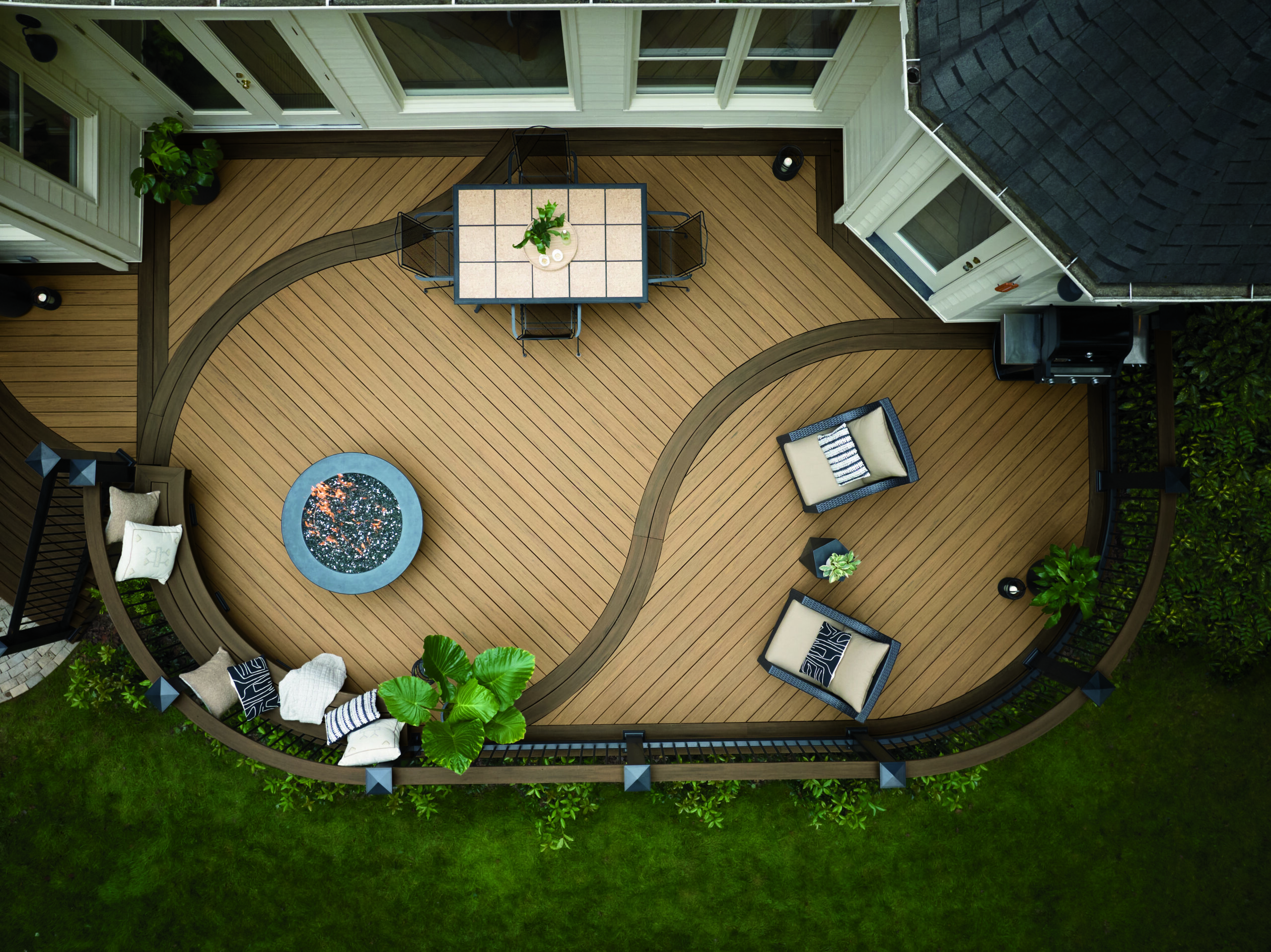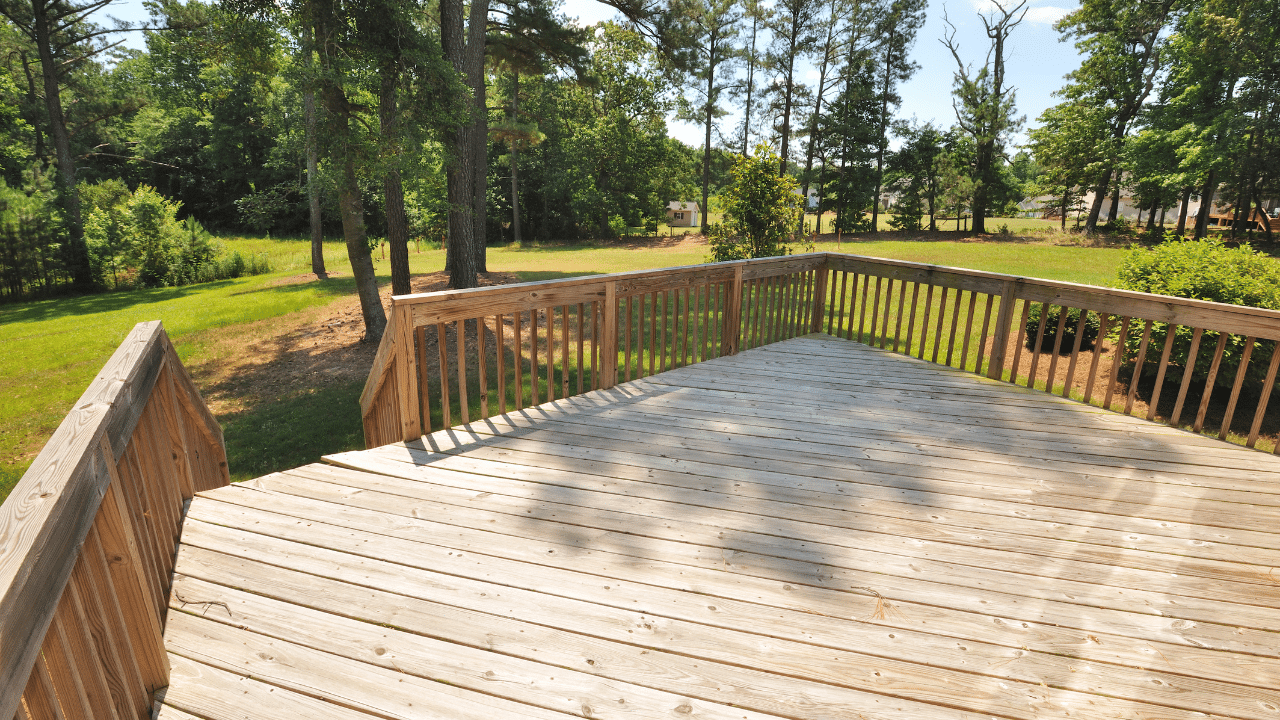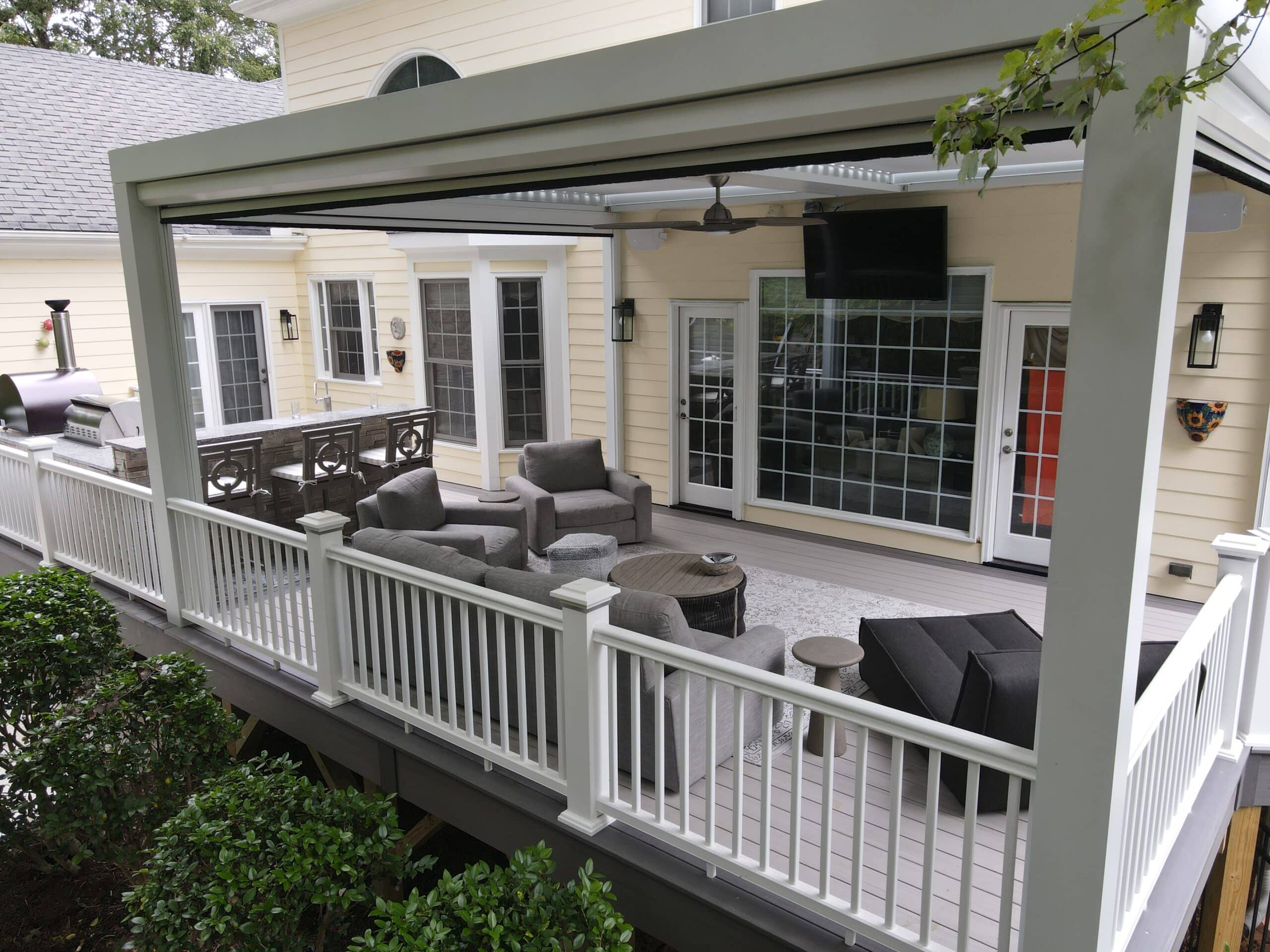Cool Composite Decking: What Type of Decking Stays Coolest in the Direct Sun?
If you’re planning to build a deck that will be baking in the sun all day, you’re probably wondering what materials will stay coolest underfoot. After all, there’s nothing worse than stepping out onto a scorching hot deck in the middle of summer! Is there cool composite decking? What about wood? At Majestic Outdoors, we explore these questions.
The good news is that you can choose decking that won’t fry your feet. While wood is a classic choice, it tends to heat up in direct sunlight. Composite decking, made from wood fibers and plastic, generally stays cooler, especially in lighter colors. PVC decking is another choice that beats the heat. Made from 100% plastic, it has excellent heat resistance.
So which way should you go? Majestic Outdoors will walk you through the pros and cons of the most popular decking materials so you can find your perfect match.
Cool Composite Decking: TimberTech is a Cool Choice

If you like the idea of cool composite decking, consider using TimberTech decking materials to withstand the heat.
TimberTech, an AZEK company, offers several lines of composite decking, but the TimberTech advanced PVC collection (previously sold under the AZEK name) provides superior protection against hot feet. Made from high-performance PVC, this decking is designed to stay up to 30°F cooler than other composite materials. That’s a pretty significant difference when the sun is blazing.
The company’s Alloy Armour Technology, the proprietary capping used on TimberTech PVC deck boards, is engineered to be more heat resistant than traditional composite caps. It also has excellent color retention, so your deck will keep its cool looks even after years of sun exposure.
Choose lighter colors for your outdoor space for composite decking that doesn’t get hot. Darker colors absorb more heat.
Other Benefits of TimberTech Decking: Realistic Wood Looks
TimberTech offers some of the most realistic wood looks available. With advanced color technology and its proprietary protective capping, you’ll get the beauty of exotic hardwoods without the maintenance. A few of the standout collections include:
- TimberTech AZEK Vintage Collection: Features sophisticated, highly color-blended boards with a subtle wire-brushed, low-gloss finish for an authentic premium hardwood look. Lighter colors include Coastline and Weathered Teak.
- TimberTech AZEK Landmark Collection: Inspired by the look of reclaimed wood, this collection has dramatic, color-blended boards with a rustic crosscut grain pattern and matte finish. Lighter colors include Boardwalk and French White Oak.
- TimberTech AZEK Harvest Collection: This collection boasts cathedral wood grain patterns and a traditional wood look in nature-inspired hues. Lighter colors include Brownstone and Slate Gray.
Unmatched Durability
TimberTech, made from high-performance polymers, is manufactured to last. It is made of recycled materials and resists mold, mildew, moisture damage, scratches, stains, and fading. It won’t splinter, crack, or rot like wood. It’s backed by industry-leading warranties, including a 50-year limited fade and stain warranty.
Environmentally Friendly
Made from approximately 60% recycled materials, including post-consumer waste like vinyl siding, TimberTech AZEK PVC decking is a sustainable choice. It’s also fully recyclable at the end of its long lifespan.
Natural Wood: A Surprisingly Cool Decking Choice

While composite and PVC decking are engineered to resist heat, natural wood stays cool underfoot. Unstained wood decking, in particular, can feel cooler than even the lightest-colored composite boards.
Unstained Wood Stays Coolest
The natural properties of wood give it an advantage over synthetic decking materials in terms of heat resistance. Wood is a poor conductor of heat compared to denser composites. Its porous cell structure allows the wood to dissipate heat more efficiently.
Pressure-treated pine is one of the best choices for a cool wood deck. Light-colored softwoods like pine don’t absorb and retain as much heat as denser hardwoods. In direct sunlight, a pressure-treated pine deck can be as much as 20°F cooler than composite boards of a similar color.
Cedar and redwood are two other softwoods that stay fairly cool. Their light color and open-grain pattern help them resist heat buildup better than most hardwoods.
The key is to leave the wood unstained to maximize its heat-dissipating properties. Stains and sealers fill in wood grain and conduct heat, making the surface hotter. A clear wood preservative is a good option to protect the wood without diminishing its cooling ability.
Drawbacks of Natural Wood
The tradeoff for wood’s coolness is less durability and higher maintenance than composite. While untreated wood can be cooler, it is susceptible to moisture damage, warping, splintering, and rot. Regular cleaning, sealing, and staining are required to keep wood decking in good shape over time.
Pressure-treated lumber is more durable than untreated wood but is still prone to cracking and splintering without diligent upkeep. Cedar and redwood are naturally rot-resistant but will weather to a silvery gray if not regularly refinished.
So, while natural wood is a cool decking option, it requires more work to maintain its appearance and structural integrity over the long term than lower-maintenance composite and PVC. Choosing wood means trading some durability for a cooler deck.
For Cool Composite Decking, Choose a TimberTech Custom Deck from Majestic Outdoors
Natural wood is beautiful, but when it comes to building a deck, we believe TimberTech decking materials are the way to go because of their technology to keep them cooler, their durability, their low maintenance properties, and their overall look.
Contact Majestic Outdoors, and let’s discuss your options for composite decking that doesn’t get hot so you can finally build that deck of your dreams.



